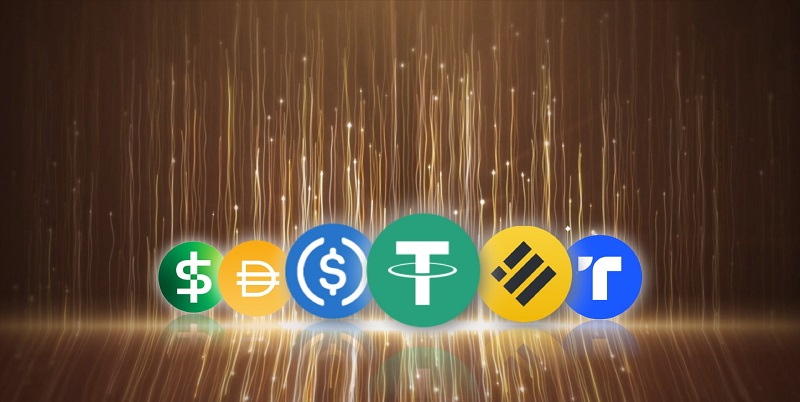Small and medium enterprises (SMEs) are the lifeblood of global economic development. They constitute a staggering 90% of all businesses and generate 50% of worldwide employment. However, despite their significance, many SMEs face challenges in thriving and expanding without accessing the global financial system. This is where stablecoins like USD Coin (USDC) and Tether (USDT) come into play, offering SMEs easy access to the financial system while capitalizing on the unique features provided by blockchain technology.
The Need for SMEs to Access the Global Financial System
SMEs often encounter hurdles when seeking to expand their operations, such as limited access to credit and financing options. These obstacles hinder their growth potential and impede their ability to compete on a global scale. The global financial system plays a vital role in supporting SMEs by providing various financial services and opportunities. However, accessing this system can be complex and costly for SMEs without the right tools and infrastructure.
The Benefits of Stablecoins for SMEs
Stablecoins, such as USDC and USDT, offer a solution to the challenges faced by SMEs in accessing the global financial system. These digital currencies are designed to maintain a stable value, typically pegged to a fiat currency like the US dollar. By utilizing stablecoins, SMEs can overcome the volatility often associated with cryptocurrencies, ensuring that their transactions retain a consistent value over time. This stability opens up new avenues for SMEs to engage in global trade, receive payments, and effectively manage their finances.
Stablecoins as an Alternative to Traditional Forex Systems
One of the significant advantages of stablecoins for SMEs is their potential to bypass many of the restrictions imposed by local governments through traditional forex systems. Public blockchains, on which stablecoins operate, are borderless. This borderless nature allows SMEs to engage in cross-border transactions without intermediaries, reducing operating costs and enhancing efficiency. By leveraging stablecoins, SMEs can navigate complex foreign exchange regulations and tap into global markets seamlessly.
Leveraging Blockchain for Global Trade and Financial Management
Blockchain technology provides SMEs with a groundbreaking solution for conducting global trade and managing their finances. With blockchain, companies can securely record transactions, maintain immutable ledgers, and achieve the highest level of transparency. These features offer SMEs a verifiable database that ensures the authenticity and reliability of every transaction. By embracing blockchain for global trade and financial management, SMEs can streamline their operations, improve trust with their partners, and gain a competitive edge.
Transparency and Security provided by Public Blockchains
The transparency and security aspects of public blockchains are particularly beneficial to SMEs. Immutable ledgers on public blockchains provide an irrefutable record of all transactions, promoting transparency and accountability. This level of transparency not only enhances trust among SMEs’ stakeholders but also enables better auditability and compliance with regulatory requirements. SMEs can rest assured, knowing that their financial data is securely recorded on a verifiable database.
Using DeFi Opportunities for Lending and Borrowing
Decentralized Finance (DeFi) is another avenue through which SMEs can leverage the power of blockchain technology. SMEs can tap into DeFi opportunities to lend or borrow against their crypto holdings, offering them greater flexibility in managing their capital needs. By participating in DeFi protocols, SMEs can access a wider range of financing options, reduce reliance on traditional banks, and gain more control over their financial resources.
DLTPAY: A Unified Solution for Blockchain-based Services
Simplifying onboarding and speeding up the adoption of blockchain-based services is crucial for SMEs. DLTPAY, a Web3 payment and DeFi platform, offers a unified solution tailored to meet the needs of enterprises. With DLTPAY, SMEs can easily onboard onto the blockchain, access stablecoins, and utilize various DeFi services. This user-friendly platform simplifies the process for SMEs, ensuring that they can seamlessly utilize blockchain-based services to enhance their operations and financial management.
The Impact of Blockchain-based Services on SMEs in Emerging Economies
The adoption of stablecoins and blockchain-based services has significant implications, particularly for SMEs in emerging economies. These regions often face isolation due to limited financial infrastructure and barriers to global trade. However, by embracing stablecoins and blockchain, SMEs in emerging economies can break free from their isolation, gain better opportunities to scale and thrive, and actively participate in the global economy. Stablecoins and blockchain offer them a gateway to global trade, enabling SMEs to realize their full potential and contribute to economic growth in their respective countries.
The advent of stablecoins and blockchain technology brings immense benefits to SMEs worldwide. These innovative solutions empower SMEs to access the global financial system, conduct cross-border transactions, and manage their finances with greater efficiency, transparency, and security. The continued development and adoption of stablecoins, combined with user-friendly platforms like DLTPAY, hold enormous potential for SMEs, enabling them to overcome challenges, unlock new opportunities, and contribute to global economic development. As SMEs embrace these transformative technologies, the possibilities for their growth and success are limitless.

